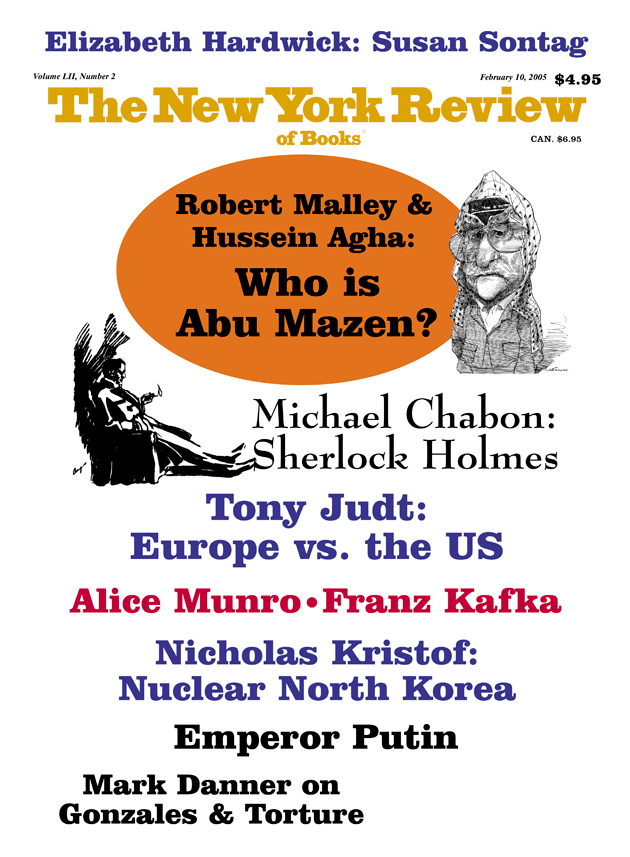Except in unusually desolating circumstances, human beings do not want to die. Medicines, hospitals, and so on are called upon to do what they can, and, that failing, there is not much to do except to surrender. It was otherwise with Susan Sontag, who fought death, challenged it. Her death in December is a great sadness for those who loved her personally and for those who treasured her luminous career as a writer. In the previous decades she had known serious assaults on her life. An illness sent her to Paris, where in her scholarly fashion she had decided the most hopeful treatment might be found. This past year, she spent months in Seattle being treated for a return of cancer. That failing, she was sent back home to New York, where she underwent further treatment, and then died. A mournful defeat of her will to live.
She was born in New York City, but spent her youth in California. It seems right that she went to Hollywood High, and also to the University of Chicago during its period of intellectually radical experiment. Most useful of all was her time in Paris, since the European literary landscape established, one might say, her eminence as an American essayist. Simone Weil, Camus, Sartre, Nathalie Sarraute, and others were the subjects of her early essays in Partisan Review and in these pages. Indeed, Sontag did not write about Hawthorne, Melville, Emerson, Faulkner, the heroes of our culture. America for her was the movies and even in that art her subjects were Bresson, Godard, and Resnais. When asked about this, she once said her idea in her essays was to be “useful.” That she accomplished with dazzling brio.
Many of Sontag’s essays are appreciations of the neglected, such as Jack Smith’s Flaming Creatures, “the poetic cinema of shock.” And some are expressions of moral outrage. Under the title “Fascinating Fascism,” the films of Leni Riefenstahl are examined, also in these pages, with a prosecutorial vehemence. After the glories of Triumph of the Will, with its glamorous footage of Hitler’s marching soldiers, Riefenstahl, following World War II, turned to the peaceful Nuba, an African tribe with its ceremonial wrestling matches displaying a primitive ideal of male beauty and strength without a wish to destroy or to humiliate the loser. Sontag’s interpretation of the Nuba photographs finds them yet another celebration of brute strength, of fighting as man’s spiritual mission, in some way Nazi ideals transported to Africa. Riefenstahl’s journey of artistic reclamation does not come out here as she had designed it.
“Notes on Camp” is probably the most widely read literary essay of the last decades. Camp is an elusive idea or mode of behavior, acting or “acting out.” Sontag reads it as an historical phenomenon like the notions or costuming of the Pre-Raphaelites. The gestures, fooling around of young men on Christopher Street in Greenwich Village are not new; instead they are a thrift-shop version of attitudes and posturings that have long been “natural” to some.
“The late seventeenth and eighteenth century is the great period of Camp: Pope, Congreve, Walpole, but not Swift; …the rococo churches of Munich; Pergolesi. Somewhat later: much of Mozart…. Titus Andronicus and Strange Interlude are almost Camp, or could be played as Camp. The public manner and rhetoric of de Gaulle, often, are pure Camp.” Few readers can judge her rampage through history and art to define what is or is not Camp. No matter, the essay is like a sun-splashed trip in a balloon. “Camp is a woman walking around in a dress made of three million feathers.” Her epigram in the manner of the great Camp wit, Oscar Wilde.
Illness as Metaphor was Sontag’s last collection of essays, although not the last of her writings.* The evasive public language about illness and death is a denial of human suffering. Tuberculosis with its thinness and pallor is a particular temptation to a woefulness somehow romantic. The young woman on her deathbed is at last visited by her inconstant lover and thus dies with an ethereal final breath. Cancer is another matter; it is “unimaginable to aestheticize the disease.” And: “Popular accounts of the psychological aspects of cancer often cite old authorities, starting with Galen, who observed that ‘melancholy women’ are more likely to get breast cancer than ‘sanguine women.'”
The death of Susan Sontag is a loss for the world, for friends, readers, and particularly for her son, David, himself a gifted writer. In the end, nothing is more touching to the emotions than to think of her own loss of evenings at “happenings,” at dance recitals, the opera, movies. Once, after one of those occasions in Town Hall with a panel of writers and the crowd that gathered in the lobby later, a young man came up to her and asked: “What are you noted for?” Her answer: “For the white streak in my black hair.”
Advertisement
This Issue
February 10, 2005
-
*
An anthology of her work, Where the Stress Falls, was published by Farrar, Straus and Giroux in 2001. She also published in 2003 her book Regarding the Pain of Others, on war photography. ↩


